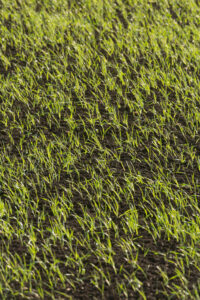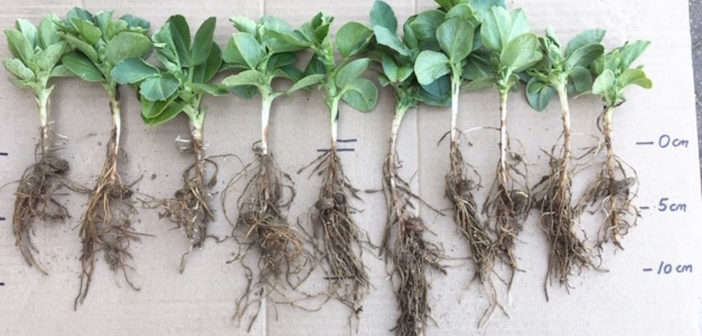Agrovista is recommending the use of its Phosphorus Liberator to unlock phosphorus already present in the soil. Making better use of existing soil reserves will greatly reduce the risk of spring-sown crops running short of the nutrient during establishment.
Spring cereals in particular have a high demand for P in the first few weeks after germination but are often unable to secure enough to support optimum growth, even when the nutrient appears to be plentiful.
Agrovista technical manager Mark Hemmant said: “Phosphorus is critical for cell biochemical functions and cell division, so is required in relatively large quantities during seed germination and establishment to underpin healthy root and shoot growth.
“New sowings on high calcium or high pH soils are especially vulnerable to shortage, as most of the phosphorus is bound up as insoluble calcium phosphate and is not available to the crop. This risks poor growth and tillering and puts plants on the back foot before they can get going.”
Applying bagged fertiliser is expensive and can be inefficient, according to the company. Depending on soil type and pH, as much as 90% of P applied in this form can be locked up quickly, often within days.
“It makes much more sense to make use of what’s already in the soil,” said Mark. “In these situations, I advise using Phosphorus Liberator, a soil-applied product that can free up significant amounts of P in a very short time.”
The product is based on carboxylic acid technology and releases bound calcium phosphate and keeps it in solution, where it breaks down into its constituent parts. This ensures phosphate is available for root uptake during the first weeks.
It can be applied through a conventional sprayer pre-drilling or tank-mixed with a wide range of pre-emergence herbicides at rates tailored to soil P levels and crop needs. It’s also effective over a wide temperature range, and is biodegradable and not classified as hazardous to the environment, with the added benefit of reducing fertiliser bills.

Trial results
The potential of Phosphorus Liberator to boost spring crop performance was clearly shown in a fully replicated trial on heavy calcareous soil at Agrovista’s flagship Project Lamport site in Northamptonshire last season.
A significant 0.4 tonne per hectare yield increase was seen in plots where the product was applied pre-emergence compared to the untreated crop, despite applying a commercial rate of bagged P to the while trial.
There was also an effect on the grain specific weight at harvest, which increased to 1.49kg/hl.
“Both gains were impressive and statistically significant, despite there being no visual difference observed between plots,” said Mark. “We saw similar results in spring barley, and it seems likely we could see an increase in specific weight in spring oats. Meeting milling specification is critical with this crop, so that’s an area we will be looking at.”
Late-sown beans which came under extreme drought stress in the spring showed a very positive response to Phosphorus Liberator last year.
Oxfordshire-based agronomist Quentin Ham conducted a split field trial on winter beans sown at the end of December. The product was applied at 10 litres per hectare with a pre-emergence herbicide to an area of the crop.
Plant numbers on the treated area hit 22 per square metre on the 4th of April, compared with just 13 on the untreated area. Foliar and root weights were said to be 133% and 122% higher, respectively.
Hot, dry and subsequent drought conditions took a toll on the sandy soil, however plants on the treated area formed more pods than the untreated before the main impacts were seen, therefore performing to the national average.
“The field had a P index of 4.2 but we still got a good response, showing that even where there appears to be plenty of phosphorus it is important to make sure it is available to plants during the critical early phase,” said Quentin.
“I have used the product commercially and run a lot of trials and have had a 100% strike rate, seeing massive plant responses. The additional root growth enhances a crop’s ability to capture nutrients, manage against root-related diseases and cope with drought conditions.

“Phosphorus Liberator is likely to work as well in spring beans in a similar situation and may be even more important in spring crops generally, due to the shorter period of time available to obtain sufficient root growth.”
Guidelines for the use of Phosphorus Liberator are:
- Apply through conventional boom sprayer at usual water volumes
- Widely tank-mixable with agrochemicals, including glyphosate and many pre-emergence herbicides
- Apply pre-planting to early crop emergence
- Apply at 5 litres/ha when used alongside phosphate fertilisers or organic manures
- Apply at 10 litres/ha when applied alone.


